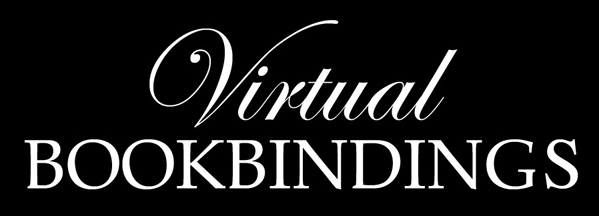

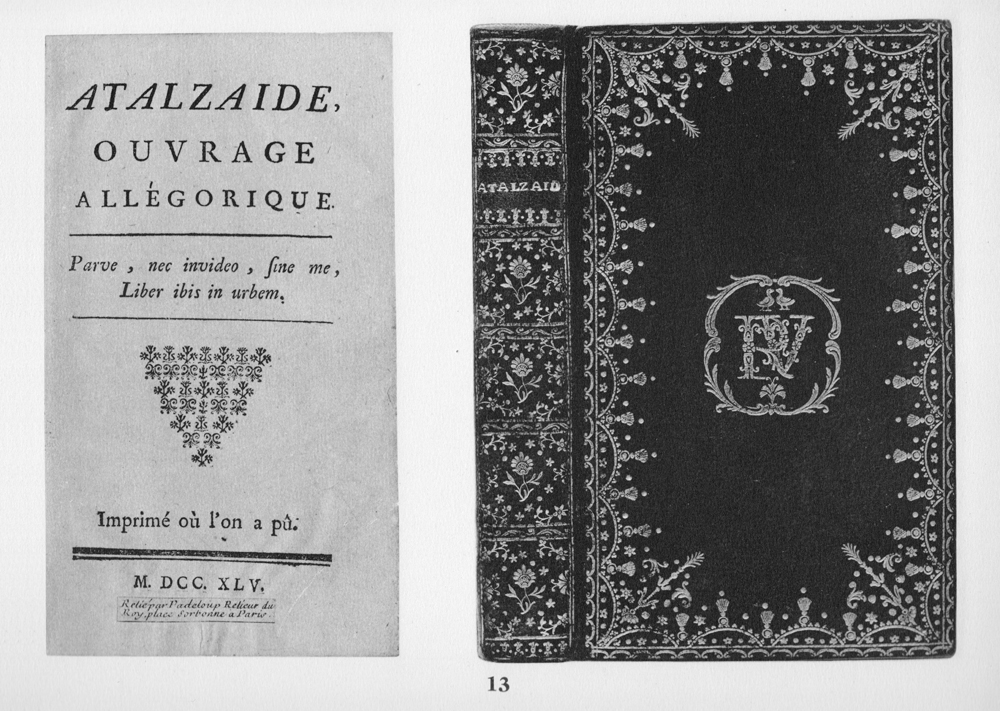
| The attribution of the binding reproduced above to Padeloup is another example of a terrible error made by an "expert" of considerable standing, Seymour De Ricci, is one more of those who was fooled into thinking that Padeloup's ticket pasted inside a book always meant that he also decorated the binding as well. Thoinan warned us about this and as did Émile Dacier also. However De Ricci seemed oblivious to the obvious as he even attributed to Padeloup a binding on Dubuisson's own 1757 publication (see item 15 in this same publication) that was possibly bound in 1758 the very year that Padeloup died at the age of 72, (born 22 December 1685, died the 7th of September 1758). This fact alone should have made such an attribution seem doubtful, especially when you consider that Dubuisson replaced Padeloup as the King's binder, a post he could not achieve without being a highly skilled bookbinder and doreur, why would such a skilled artist such as Dubuisson have the elderly Padeloup decorating his own book, no no this is too absurd, De Ricci certainly was not using his head when he made these attributions, nor had he researched the issue because if he had, he would have found that Dubuisson used these same tools for over a decade, decorating hundreds of bindings with the very same tools. When an 'expert" makes such a mistake he leads all the others down the garden path of error and eventual chaos, which is what we find today. The Bibliotheque Nationale de France, a supposed highest authority, have still not been able to recognize the difference between a Padeloup binding and the work of Dubuisson (I draw your attention to a blatant example) |
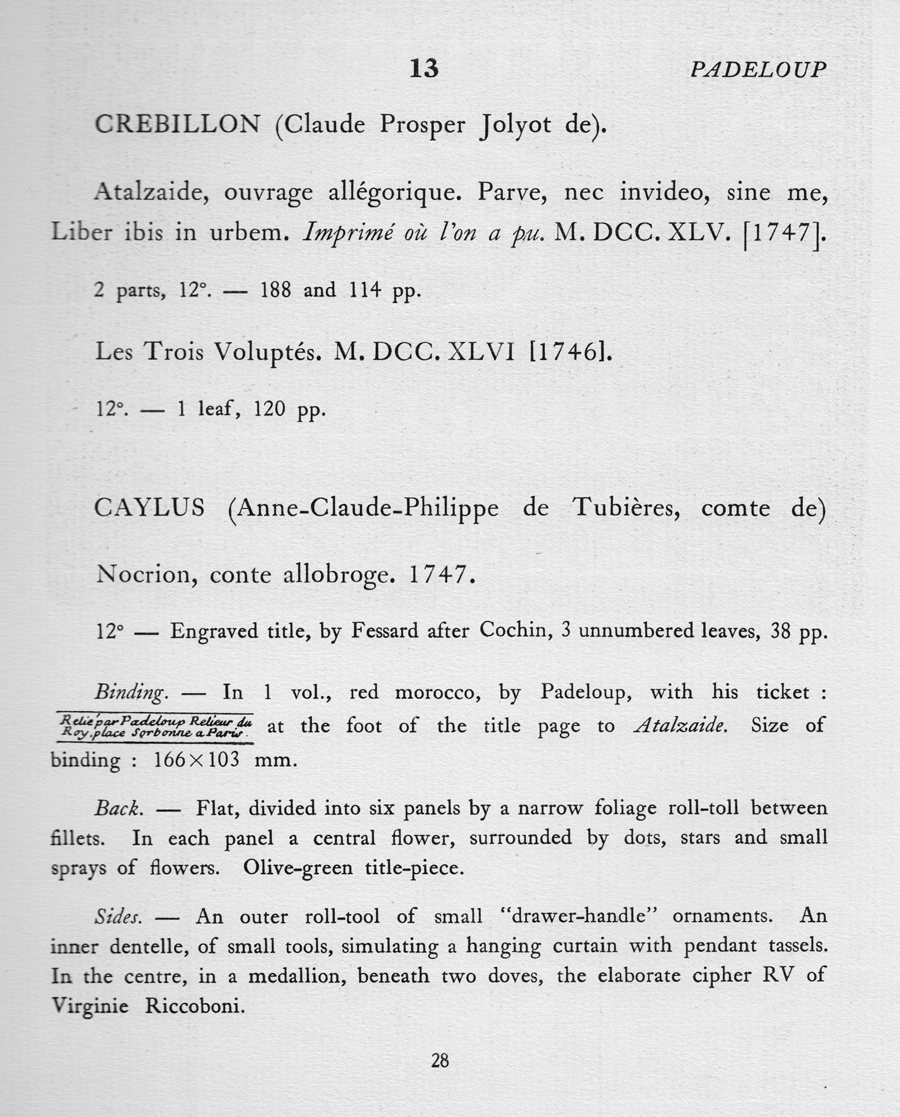
| However we are not going to harp on De Ricci's unpardonable errors, I want to show you some interesting discoveries that came from an out of the blue email from Isaiah Cos a few months ago asking me my opinion on his recently acquired binding shown in the middle of Comparative Diagram 1. At the time of his email I had been on a 3 year sabbatical from bookbindings, now he was asking me about this binding and questioning whether or not some of the imprints might be those of Dubuisson. Three years without looking or thinking about Dubuisson's tools took a terrible toll on my memory. I had to really search to find an imprint which I should have known but failed to record in my Dubuisson catalogue, it is a tool that Derome had copied so well you needed magnification to know the difference, and I had catalogued Derome's example as dj-15. Now I could see there was work to do here and I abandoned all other projects and returned to bookbindings with renewed energy. My feeling was that this must be an early Dubuisson binding and now I have found some confirmation of that. Firstly it would seem that the vast array of tools that I consider unique to Pierre-Paul Dubuisson did not appear before 1746, we do not see any spines decorated with his tools before that date, with the possible exception of a sharks tooth palette/roulette that was in use in 1735, that possibly was owned by his father. In Comparative Diagram 1, we see a 1745 Almanach Royal (image from Real Biblioteca PATRIMONIO NACIONAL - PAS/ARM3/40) that was probably not decorated by Dubuisson, and two bindings that followed that were decorated by Dubuisson with the aid of his own tools, especially the 1947 De Ricci example we see Dubuisson's favourite pd-21 pair that he used for many years. What this suggests to me is a point where Dubuisson took over the work, building on past methods and tools in 1746. |
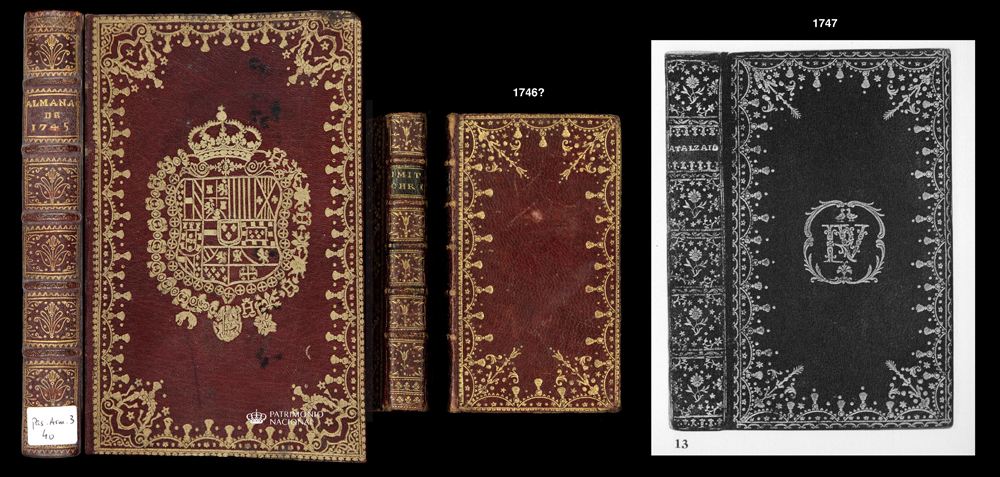
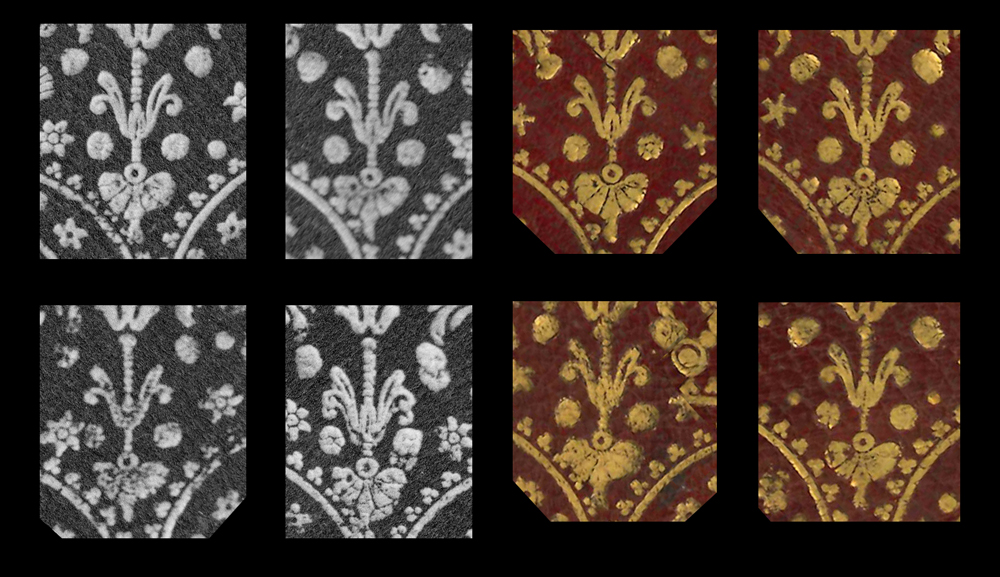
| In Comparative Diagram 2, we see the imprints of one of Dubuisson's first tools and one that he used often in his first years of gold tooled decoration, we can see that it has been used here in conjunction with other tools that makes it's identification tricky, at first I did not think that all the dots surrounding it were part of the tool, however after mounting all the examples together in the above diagram, it become obvious that they are part and parcel of the same tool, the dots being more than dots as you will see in Isaiah's high resolution photograph below. |
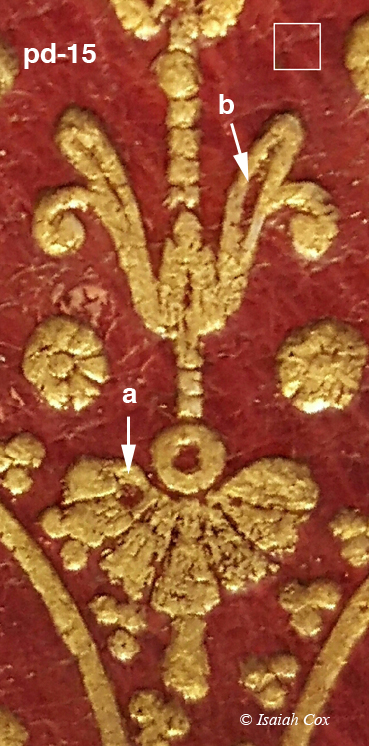
| As stated previously high resolution images pave the way to irrefutable proof, in this highly enlarged image we can see a flaw in the fleuron at point 'a' and an inspection of the examples in Comparative Diagram 2 verifies this flaw which will then, serve to identify this imprint. Also note the asymmetrical nature of the left side with a larger opening (shown at 'b') this feature can be observed even in lower resolutions. Now I know some readers are thinking hohum whats the big deal but actually, there is something really important here and that is that if you can identify even one imprint with certainty, the job is mostly done, you can be sure that you are on the right path. Imagine your are in a Sotheby's auction and you see with your magnifying glass (cell phone zoom) this obscure fleuron with it's tell tale flaw, you are suddenly miles ahead of those who are stuck with only the auction notice stating (Reliure de l'époque), miles ahead even of the Auction experts themselves. |
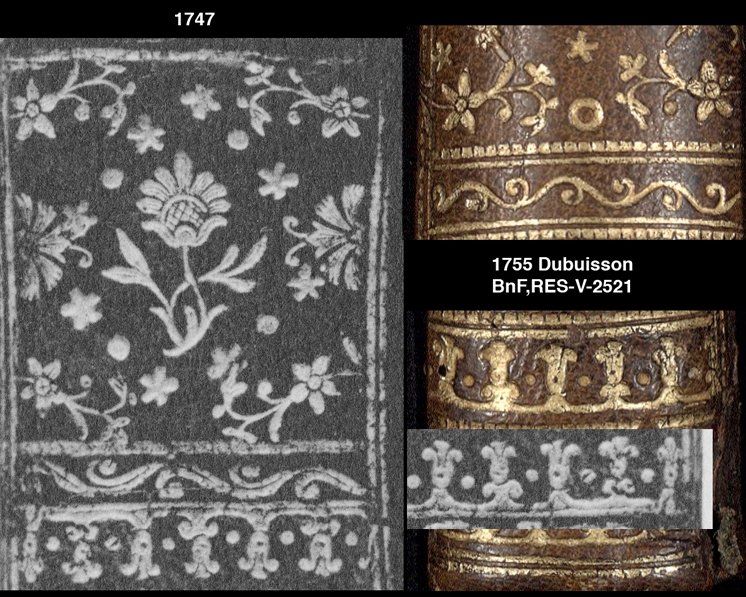
| In Comparative Diagram 3 we see the 1747 imprints are identical with 1755 imprints that are found on a binding found in the BnF and is a certified Dubuisson. at the top we see the famous pd-21 pair that continued in use even after Dubuisson's death and was used by Delorme at least up to 1777 (see this page). While at the bottom we see a palette that was one of Dubuisson's favorites. This funny palette reminds me of cowboy hats, once you have studied it you are not likely to forget it, and is quite easy to detect with alternating variations within its design, probably no other palette has so many ups and downs. However it was often copied by other binders and needs careful identification, possibly Dubuisson himself had two models of this palette (on another page I will assemble all the various examples of this palette) |
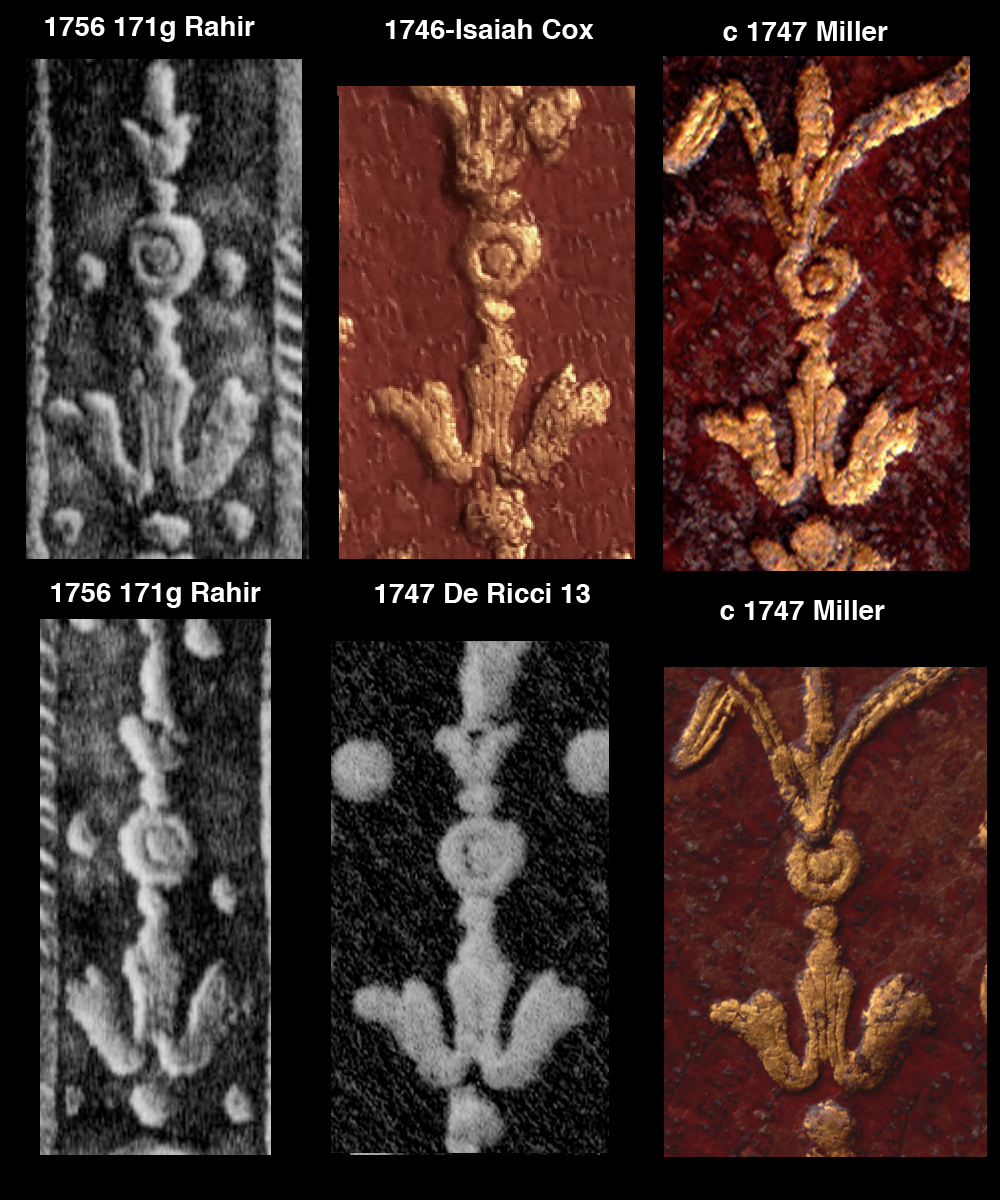
| Next we look at an imprint that is really an important find, shown in Comparative Diagram 4, where we can see, thanks to high resolution imagery, some small lines etched into the surface running vertically, these lines are normally not observed, they do not show up in normal catalogue reproductions, and as this imprint is often over laid with other imprints above and below it the actual shape of this imprint needs careful study the complete shape can be observed more or less in the 1756 examples. Now the reason this imprint takes on such importance is its appearance in forming with other tools a sort of exterior roulette like border on a mosaic binding superbly reproduced in Rahir's 1910 catalogue at 100 percent scale. (see this binding on this page) There appears on this binding certain new imprints and if there was a binding that we might suspect was not the work of Dubuisson this would be it, however this pd-7-6 imprint saves the day. We might have suspected that this is not the real tool but a copy of the original, however these barely visible lines running through the middle of it confirm that this is the same tool that Dubuisson used 10 years earlier in 1946, and interestingly this same tool was used by Delorme after Dubuisson's untimely death. I show it below greatly enlarged with a date of 1774, but this is an approximation. |
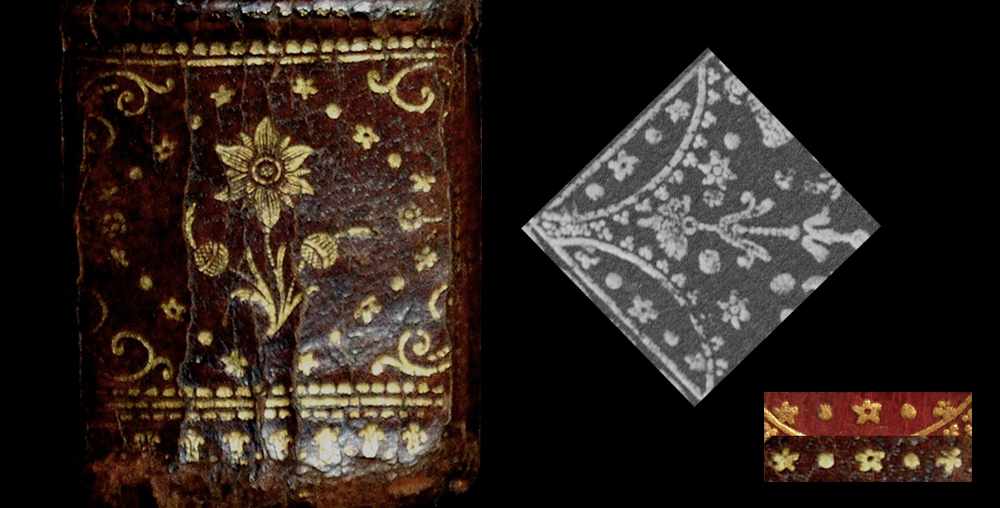
| Isaiah Cox pointed out this palette to me in his comparisons to other Dubuisson bindings and I must admit I never realized the importance of this palette until now, it's amazing how such a simple thing can become an important identifier. We see it on the 1745 Almanach which suggests that it was not a Dubuisson tool, yet it appears not only in all these examples as a sort of exterior roulette but was used afterwards in the decoration of larger spine compartments (see a 1749 or later example on this page). At first I thought these small imprints were added one by one but when you realize that they are in fact a palette, their significance is magnified. The imprints must always follow the same positions and present the same flaws, such as the star in the middle which a central hole. This star appears to be missing a small part of its upper point, this detail will be easily confirmed with magnification. |

|
click here to go to the INDEX of new pages. click here to return to the Virtual Bookbindings HOME page. see below links to previous work |
| Even experts are sometimes wrong, before you spend thousands on a book, please do your own research! Just because I say a certain binding can be attributed to le Maitre isn't any kind of guarantee, don't take my word for it, go a step further and get your own proof. In these pages I have provided you with a way of doing just that. |
| Virtual Bookings, created by L. A. Miller | return to the Home page of VIRTUAL BOOKBINDINGS |